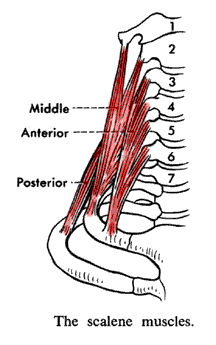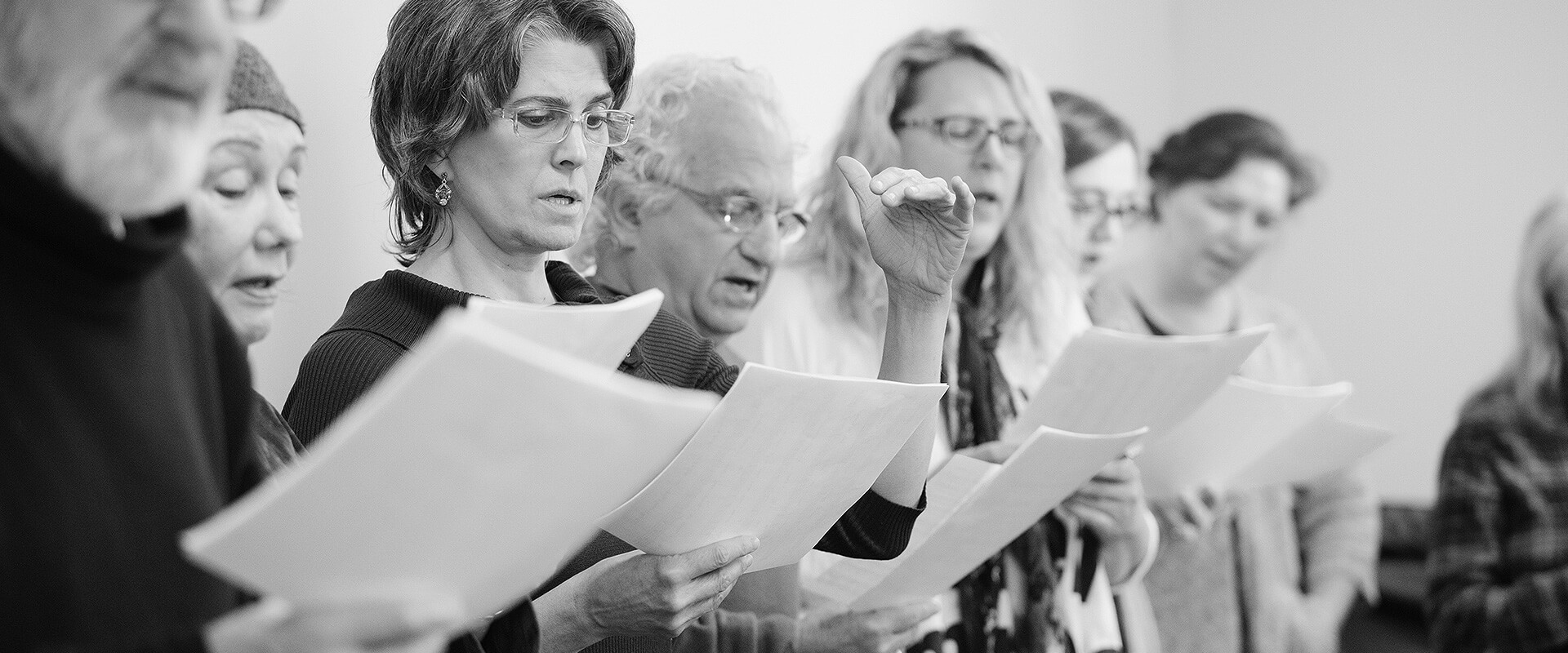The Neck
 The neck has several functions in singing. The neck is an extension of the spine and aligning it with the back improves your posture. Surprisingly it also improves your breath as there are three sets of muscles called the Scalenes which are located in the neck that assist breathing by lifting the ribcage from above. These muscles have a lot of tonus and I was not aware of their involvement in breathing until I stumbled across them in a medical text. The text stated that they were second in importance only to the diaphragm in relaxed breathing which surprised me greatly. I wrongly thought that the intercostals were second in importance. In fact, the intercostals are only used in forced breathing, not regular breathing. Keeping the neck aligned helps both in regards to breathing due to the importance of the scalenes and resonance via alignment of the pharynx.
The neck has several functions in singing. The neck is an extension of the spine and aligning it with the back improves your posture. Surprisingly it also improves your breath as there are three sets of muscles called the Scalenes which are located in the neck that assist breathing by lifting the ribcage from above. These muscles have a lot of tonus and I was not aware of their involvement in breathing until I stumbled across them in a medical text. The text stated that they were second in importance only to the diaphragm in relaxed breathing which surprised me greatly. I wrongly thought that the intercostals were second in importance. In fact, the intercostals are only used in forced breathing, not regular breathing. Keeping the neck aligned helps both in regards to breathing due to the importance of the scalenes and resonance via alignment of the pharynx.
Your vocal cords are located in your throat, or neck, just below and behind your Adam’s Apple. It stands to reason that they resonate firstly in the space directly around and above them. I have heard all kinds of strange theories about where the primary resonance of the voice is – some say the chest, others say the head. It’s the neck! How can something so obvious be so overlooked?
The alignment of the neck directly affects the tone of your voice due to the straightening of the pharynx – a soft tissue resonating chamber of great height (see Pharynx). Your tone is also improved by reducing the amount of stress on the cords by both freeing the larynx and reducing sub-glottal pressure (see Light Attack).
Some students prefer to focus on neck position, others on head position – both approaches should lead to the same thing – alignment of the pharynx. The equilibrium of the head on the spine is another approach that can also be perceived as important in maximizing the richness of your tone. The top of the spine, or nape of the neck, is located at the base of your skull. Some students learn to flex the nape of the neck to the back to achieve resonance. I use many different approaches as singers are individual and experience their body differently. Some respond better to the first approach, some to the second, etc. For me it is important that they feel, hear and experience this alignment and how it affects their tone. This alignment is especially important for classical singing but is also needed to a certain extent for all other styles of music. Neck alignment is also important in negotiating register changes. It even affects your speaking voice (see Resonance).
According to medical texts, the equilibrium of the head on the spine is maintained by a permanent tonus of the neck muscles (scalenes). In singing, we study this tonus in relation to resonance and go beyond that which is needed for daily life. The equilibrium is found with a good overall posture and when you are looking neither up nor down and the base of your skull is flexed to the back.
For more information or to book a private lesson, please go to the contact page.
-
Cervical Spine Muscles Scalenes chiropractor 3D animation
-
Scalene Muscles
-
Sternocleidomastoid Muscle
 Montreal Voice Coach
Montreal Voice Coach